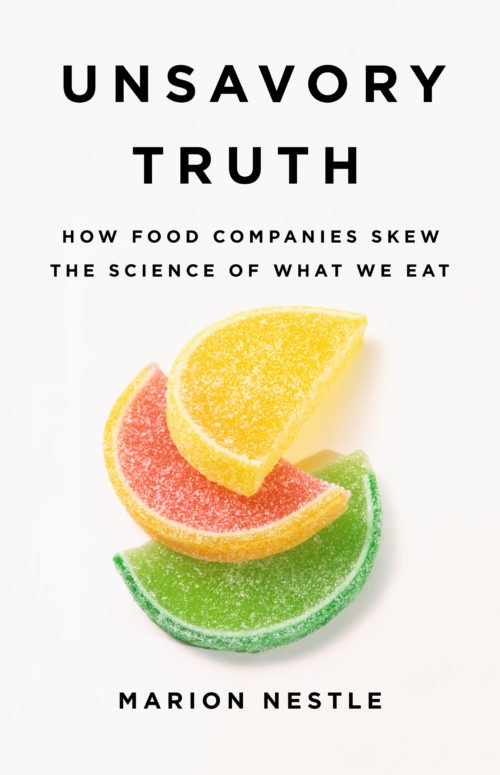Coming October 30: My new book about food company sponsorship of nutrition research and its effects on public health. 
To introduce the book, which describes the consequences of conflicts of interest generated by food industry research funding, I will be doing a series of posts about it over the next few weeks.
I begin this series with a discussion of how I manage my own financial relationships with food, beverage, or supplement companies.
As a nutrition professor, even one who is retired, I cannot avoid contacts with food companies, nor do I necessarily want to. I need to know what they are doing.
I go to meetings sponsored by food companies, read journals sponsored by food companies, read newsletters they send me, and get frequent gifts of books, research materials, product samples, and swag ranging from small (jump drives, squeeze toys) to enormous (would you believe a room-size punching bag that looks like a cola can?).
I give talks to and occasionally consult for food companies. At issue is how to do this without being influenced to change what I write or say—or appear to be so influenced.
If I were wealthier, I would just pay my own expenses and be done with it. As it is, I figured out a management policy for dealing with food company gifts and payments.
- I accept reimbursements for travel, hotels, meals, and meeting registrations (otherwise I would not be able to go).
- I do not accept honoraria, consulting fees, or any other personal payment.
- Instead, I ask the company to make an equivalent donation to the NYU Library’s Food Studies collection (which is named after me) or to my department’s fund for student travel. If the checks come to me directly, I endorse them over to NYU. I report all such income appropriately on tax forms.
I am well aware that this policy is not perfect. Small gifts, meals, and travel reimbursements are thoroughly established to influence physicians’ prescription practices, and I derive reputational benefit from donations to NYU.
But this policy makes me think carefully about conflicted situations and I try to make it work as well as I can.
My conflict of interest declaration on journal articles reads as follows:
Marion Nestle’s retirement and research funds from New York University support her research, manuscript preparation, and website at foodpolitics.com. She earns royalties from books, and honoraria and travel from lectures, about matters relevant to this publication.
A summary of this policy is posted on the About page on this site.



